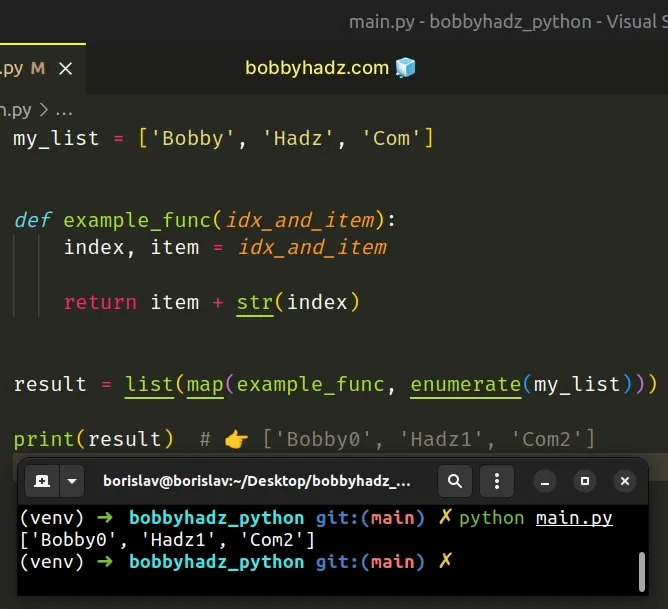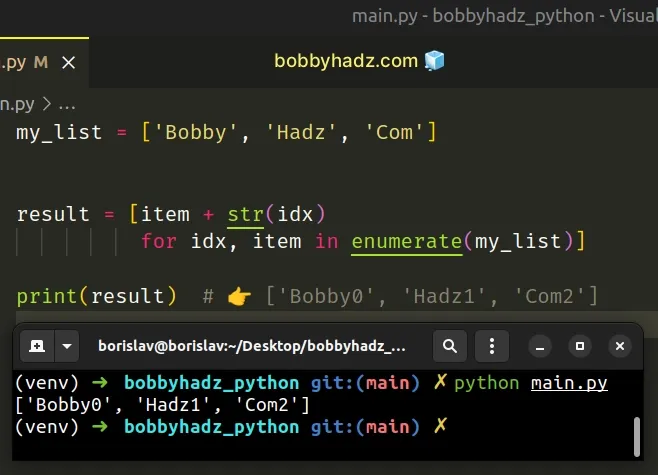Get access to the Index in the map() function in Python
Last updated: Apr 8, 2024
Reading time·2 min

# Get access to the Index in the map() function in Python
To get access to the index in the map function:
- Use the
enumerate()function to get an object of index/item tuples. - Unpack the index and item values in the function you pass to
map(). - The function will get passed a tuple containing the index and item on each iteration.
my_list = ['Bobby', 'Hadz', 'Com'] def example_func(idx_and_item): index, item = idx_and_item return item + str(index) result = list(map(example_func, enumerate(my_list))) print(result) # 👉️ ['Bobby0', 'Hadz1', 'Com2']

We used the enumerate function to get access to the index in the map()
function.
The enumerate() function takes an iterable and returns an enumerate object containing tuples where the first element is the index, and the second is the item.
my_list = ['apple', 'banana', 'melon'] for index, item in enumerate(my_list): print(index, item) # 👉️ 0 apple, 1 banana, 2 melon
Notice that we had to unpack the elements of the tuple.
def example_func(idx_and_item): index, item = idx_and_item return item + str(index)
An alternative is to use a
list comprehension with
the enumerate() function.
# Get access to the Index in the map() function using a list comprehension
This is a three-step process:
- Use a list comprehension to iterate over the iterable.
- Use the
enumerate()function to get an object of index/item tuples. - You can access the index as the first item on each iteration.
my_list = ['Bobby', 'Hadz', 'Com'] result = [item + str(idx) for idx, item in enumerate(my_list)] print(result) # 👉️ ['Bobby0', 'Hadz1', 'Com2']

The map() function takes a function and an iterable as arguments and calls the function with each item of the iterable.
Instead of using map(), in most cases, you can just use a list comprehension
and make your code a bit easier to read.
I've also written an article on how to pass multiple arguments to the map() function.

